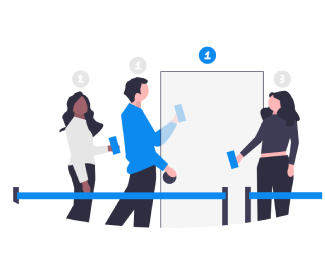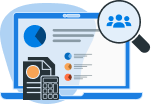What Is a Work Plan?
A work plan is a comprehensive document that lists the actions required to finish a certain project or reach a predetermined objective. It includes the what, why, how, who, and when of a task or initiative. In the context of HR, work plans are often used to streamline key operations such as recruitment drives, onboarding schedules, employee engagement activities, training programs , or compliance tasks.
Work plans typically include the following components:
- Objective: What you want to accomplish.
- Tasks or Activities: A breakdown of the steps involved.
- Timeline: Start and end dates, deadlines, and milestones.
- Assigned Roles: Who is responsible for each task.
- Resources Required: Budget, tools, personnel, or third-party support.
- Key Performance Indicators (KPIs): Metrics to gauge achievement.
What Makes Work Plans Different in HR?
Unlike general project plans, HR work plans often involve people-centric objectives that impact employee experience, compliance, and organizational development . For instance, a work plan for implementing a performance management system will not only involve technical steps but also require change management, communication plans, and training schedules.
In recent years, HR teams have started integrating their workspace plans, which define physical or virtual arrangements for employees, with broader work plans. This alignment ensures that infrastructure supports people strategy effectively, especially in hybrid or remote environments.
Work Plan Example
To make things clearer, here is a detailed example of a work plan for an employee onboarding program.
Objective:
30 new hires were successfully onboarded in Q3, making sure they are prepared and feel included during the first 30 days of employment.
Tasks and Activities:
- Develop welcome kits and onboarding manuals.
- Schedule orientation sessions with different departments.
- Assign mentors or onboarding buddies to each new hire.
- Set up system and tool access (email, HRMS, etc.).
- Collect feedback through onboarding surveys after 15 and 30 days.
Timeline:
- Week 1–2: Preparation of onboarding documents and tools
- Week 3: Schedule department presentations
- Week 4: Launch onboarding for first cohort
- Month 2: Monitor progress and address issues.
- Month 3: Conduct final feedback session and improvements.
Assigned Roles:
- HR Manager: Project owner, document development
- IT Team: Tool access and system configurations
- Team Leaders: Departmental presentations
- Mentors: Peer-to-peer support and integration assistance
Resources:
- HRMS platform (e.g., Qandle)
- Welcome kits (stationery, merchandise, handbooks)
- Orientation room or virtual meeting tools (Zoom/Meet)
KPIs:
- 90% onboarding completion rate
- 85% satisfaction score from feedback surveys
- First-month retention rate ≥ 95%
This work plan gives clarity, ensures all parties are aligned, and enables the HR department to deliver a consistently high onboarding experience across the board.
Why Do You Need a Work Plan?
Creating and using a work plan brings a multitude of benefits, especially in HR, where responsibilities often span compliance, employee engagement , policy implementation, and talent management .
1. Clear Goal Orientation
A work plan forces the team to clarify the purpose of the initiative. Instead of starting with vague objectives, it compels everyone to align on what success looks like.
2. Enhanced Accountability
Every member is aware of their responsibilities when positions are clearly defined. This clears up any misunderstandings and helps ensure that no chores are missed.
3. Improved Time Management
A timeline with specific deadlines ensures that the team moves forward steadily without delays. It also allows for better scheduling of dependencies and resource availability.
4. Better Resource Allocation
With a detailed plan, you can anticipate what tools, technologies, budgets, or human resources are needed and plan ahead to avoid last-minute rushes.
5. Increased Collaboration
HR often acts as the bridge between departments. By precisely outlining touchpoints and phases of collaboration, a well-structured plan facilitates cross-functional communication .
6. Adaptability to Change
Having a work plan doesn't mean rigidity. In fact, with regular monitoring and review, it becomes easier to adjust direction when priorities shift, something quite common in HR projects.
7. Demonstrated Professionalism
A documented work plan showcases professionalism in front of leadership and makes it easier to report progress, secure budget approvals, or gain buy-in from stakeholders.
How to Make a Work Plan?
Creating a work plan is a structured process. Here’s a step-by-step guide tailored specifically for HR professionals and recruiters:
Step 1: Define the Objective Clearly
Start by answering: What do we want to achieve? Make use of the SMART framework: time-bound, relevant, specific, measurable, and achievable.
Example: 'Train 100 employees on updated HR policies by October 15th.'
Step 2: Break Down the Activities
Enumerate all of the important tasks required to accomplish the goal. Break them down into smaller, manageable subtasks if needed.
For training: Prepare content → schedule sessions → invite participants → conduct sessions → collect feedback.
Step 3: Assign Responsibilities
Each task must have a clear owner. Identify who is responsible for planning, execution, and monitoring. Delegating effectively prevents bottlenecks.
Step 4: Establish Timelines
Give each task a reasonable start and finish date. Also include checkpoints or milestone reviews to ensure things stay on track.
Step 5: Identify Required Resources
From HR tech platforms and meeting rooms to budget approvals or external trainers, list all necessary tools and support required.
Step 6: Set KPIs and Success Metrics
Choose a method for assessing the plan's effectiveness. Common HR metrics include participation rates, satisfaction scores, retention rates, and time-to-completion.
Step 7: Get Stakeholder Feedback and Approval
Before launching, share the work plan with key stakeholders such as department heads, finance, or IT. Their feedback ensures nothing is missed and enables smoother execution.
Step 8: Monitor, Review, and Improve
Even the best work plans need adjustments. Schedule regular reviews and collect feedback to tweak the plan as necessary. Rigid plans are never as effective as flexible, developing ones.
Are you trying to streamline and digitize your work planning process for human resources?
Qandle's smart HR software helps you manage tasks, timelines, roles, and collaboration all in one place—so you can focus on what really matters: people.
Explore Qandle's HRMS solutions to build and manage your HR work plans effectively.


 Back to Glossary
Back to Glossary